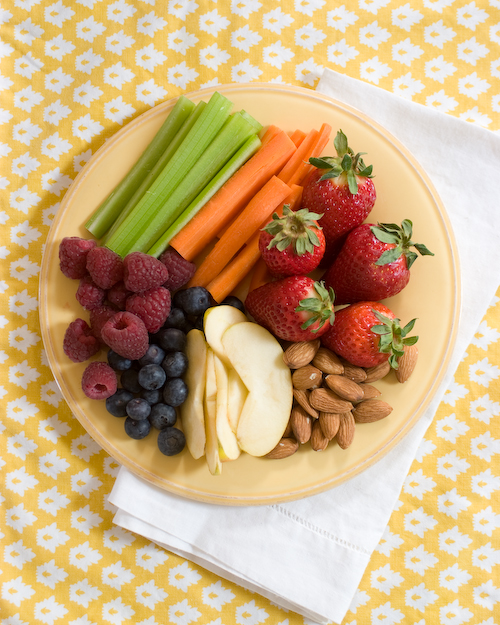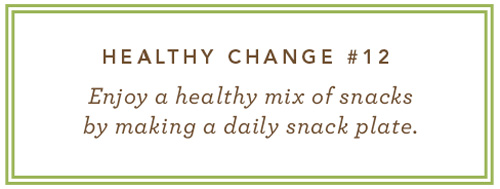
A few years ago I was offered a position at a medical device start-up with an improved syringe for performing epidurals. Mothers are experts on the blessed relief from labor pain given by epidural anesthesia, but often have stories about a complication they or a friend may have suffered. We thought that our device could reduce the risk of certain complications but what we learned was that doctors are reluctant to switch away from whichever epidural method they were first trained to use.
Introducing a new medical device is a tedious process so like many start-ups, this company offered a pantry of free snacks. To keep us near the office, they also provided a free lunch brought in from local take-out restaurants. The dishes were ordered from a stack of menus and were typically fried foods. In the beginning I limited myself to salad for lunch, avoided the free snacks, and mostly drank water. In time I tired of lunching on poorly made salads and began to order cooked dishes—fried in low-cost oils, I suspect. I also began to snack on the chips, candies and soft drinks offered. Just an occasional snack in the beginning, but without really noticing my addiction grew. Within a year I suffered an increase in weight and a troubling decline in health.
Have you or your spouse had this experience? The first thing I did was start bringing my own snacks to eat during work breaks. After I left this company I began to read about healthier eating. I was continually being surprised—about sugar, trans fats, etc.—by things that I didn’t know, or had forgotten, that were essential to healthy living. Two years and perhaps a hundred books later I started this blog. Today’s post is about the snacks we eat—the best indicator of our addiction to unhealthy food. Here are a couple of reports:
• This N.Y. Times article about classic junk snacks has a list that includes Cracker Jacks, Tootsie Rolls, Double Bubble, Twinkies and the Big Gulp/Double Gulp. Read it and weep.
• Breakfast sets up the snacks: Dr. David Ludwig of Tufts University and Children’s Hospital Boston reported that a healthy (low G.I.) breakfast results in 81% less snacking calories during the day, compared to a sugary (high G.I.) breakfast.
• Another N.Y. Times article, discussed how parental guilt and the decline of planned meals add up to giving in to kids on their favorite snacks (typically the worst food available).
• Factoid: this year we’ll average about a dollar spent each day on snacks—redirecting this money to healthy food is the best opportunity to improve your diet on a fixed budget.
Snacks are an enormous business in our society. Take a walk through your grocery store, down the candy aisle, the chip section, the cookie row, and through the cracker area. (You can remember these as the four “C’s”.) If this made you thirsty wander by the aisle for sugary drinks—it’s the biggest section. If there’s an in-store bakery check it out. These are the most toxic section of the grocery store and it’s a big, profitable business. People are starting to wise up on toxic snacks and this makes Food Inc. nervous. They monitor us through research like “Mintel’s Healthy Snacking Report”. Some recent observations:
• The snack market is divided into 20 snack categories: cereal, cheese, crackers, cookies, fruit, ice cream, meat snacks, dried fruit/fruit snacks, trail mix, popcorn, chips, pretzels, raw veggies, rice cakes, snack bars, yogurt, bagels/bialys (a flat bread), canned soup, chocolate candy bar, nuts/seeds.
• Food Inc’s big question: How much taste will we give up for our health?
• Consumers want healthy but they also want tasty. Corn and potato chips are an example of our bipolar behavior: 72% of consumers eat them but only 4% think they’re healthy. Ditto for packaged cookies.
• At the other end of the spectrum are nuts and seeds: 79% of us eat them and 87% think they’re healthy. More expensive, but you get both taste and health. Add fresh fruit: though just 66% partake regularly, 96% see them as healthy. (What is the other 4% thinking?)
A high dependence on snacks is an indicator of poor health. But even healthy people need a mid-morning or mid-afternoon refresher. Just remember, the more sugar in the snack, the sooner you’ll crave more. So what to eat? Here are our favorites:
• Raw vegetables like carrots and celery. Actually these aren’t my favorites, but it’s hard to get five vegetable servings a day if you don’t get at least one snacking.
• Fruit. We all have our favorites but cantaloupe and watermelon are underrated.
• Nuts and seeds—not the cheapest snack but a good health value.
• I like nut/dried fruit mixtures: dates with walnuts, or dried mangos with pecans.
• Popcorn, but not the sugared or microwave products. Is there a better mix of taste and value than homemade popcorn?
• Yogurt—buy the brand with the least added sugar and add your own fruit.
• Dark chocolate. I like dark chocolate chips with almonds or walnuts.
• Granola or its cousin, trail mix—purchased or homemade.
• Crackers that meet the grain rule (whole grains; more grams of natural fiber than added sugar). Yes, I’ll visit the cracker aisle and give a list in a future post.
Children naturally understand healthy snacks. A mom told of overhearing her children playing a made-up game: create a healthy snack. The daughter was the judge of her brother’s entries. The first brother’s snack was slices of carrot on a Graham cracker. The next entry was a child’s multivitamin covered with honey. They have much to learn, but children are teachable and more observant than we realize.
Impulse often drives our snacking and the lack of planning makes for less healthy snacks. We can also lose track of how much we nibble on in a day. The solution: Make a snack plate about mid-morning, or whenever you can. Lay out a healthy mix of snacks for the day and enjoy. (When I forget to do this, I regret it.)

(Or a snack bag instead of a plate if you work away from home.)
Please comment on your favorite healthy snacks. (I’m expecting a LOT of comments, please.)
Need a reminder? Download our Healthy Change reminder card. Print and fold, then place in your kitchen or on your bathroom mirror to help you remember the Healthy Change of the week.